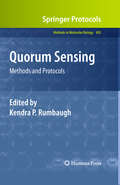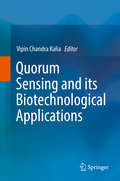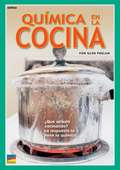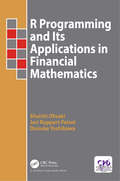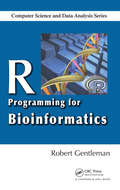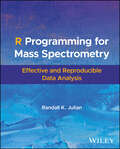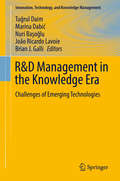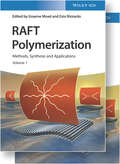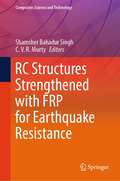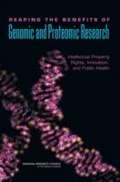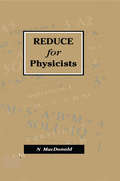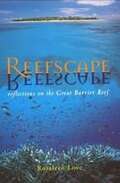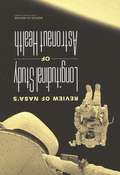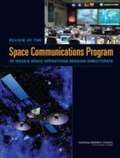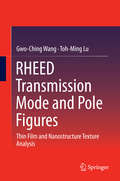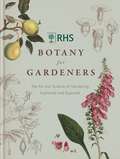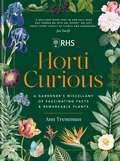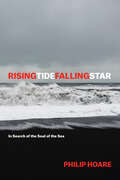- Table View
- List View
Quorum Sensing
by Kendra P. RumbaughSince its early days in the 1990s, the Quorum Sensing (QS) field has grown from a few dozen laboratories, investigating the pathways, proteins, and chemicals that facilitate signaling in bacteria, to hundreds of groups that have integrated evolutionary biology, computer science, mathematics, engineering, and metagenomics to create an ever-expanding and dynamic field. In Quorum Sensing: Methods and Protocols, expert researchers provide an in-depth set of diverse protocols that span this broad area of study. Broken into three detailed sections, the volume covers the detection, isolation, and characterization of the QS signals made by both Gram- and Gram+ bacteria, determination of the function of QS signals in vivo, and the development of QS disruption strategies. Written in the highly successful Methods in Molecular BiologyTM series format, chapters include brief introductions to their respective topics, lists of the necessary materials and reagents, step-by-step, readily reproducible laboratory protocols, and expert tips on troubleshooting and avoiding known experimental pitfalls. Comprehensive and cutting-edge, Quorum Sensing: Methods and Protocols serves as an invaluable collection of easily accessible techniques for scientists seeking to further our knowledge about bacterial communication and its relation to humanity.
Quorum Sensing and its Biotechnological Applications
by Vipin Chandra KaliaThis book delves into the biotechnological applications of Quorum sensing (QS)- a peculiar gene-regulatory process of some microorganisms. Quorum Sensing allows a large bacterial population to work together in a coordinated manner to carry out metabolic activities, which individual bacterium cannot. The different chapters describe how, associating bioremediation process with energy generation is an economical proposal, for reducing pollution and managing biowastes. The book discusses how QS can be exploited for biotechnological applications in generating bioproducts, bioenergy, bioremediation, biosensors, health and agricultural activities. It further highlights how QS is becoming an integral part of synthetic biology for genetic circuits for producing: (i) novel products, (ii) biosensors, (iii) bioactive molecules, etc. The book is divided into different sections for a clear understanding of the applicability of QS in, the Environment, Energy, Agriculture and Health sectors.
Quorum Sensing vs Quorum Quenching: A Battle with No End in Sight
by Vipin Chandra KaliaMicrobial relationships with all life forms can be as free living, symbiotic or pathogenic. Human beings harbor 10 times more microbial cells than their own. Bacteria are found on the skin surface, in the gut and other body parts. Bacteria causing diseases are the most worrisome. Most of the infectious diseases are caused by bacterial pathogens with an ability to form biofilm. Bacteria within the biofilm are up to 1000 times more resistant to antibiotics. This has taken a more serious turn with the evolution of multiple drug resistant bacteria. Health Departments are making efforts to reduce high mortality and morbidity in man caused by them. Bacterial Quorum sensing (QS), a cell density dependent phenomenon is responsible for a wide range of expressions such as pathogenesis, biofilm formation, competence, sporulation, nitrogen fixation, etc. Majority of these organisms that are important for medical, agriculture, aquaculture, water treatment and remediation, archaeological departments are: Aeromonas, Acinetobacter, Bacillus, Clostridia, Enterococcus, Pseudomonas, Vibrio and Yersinia spp. Biosensors and models have been developed to detect QS systems. Strategies for inhibiting QS system through natural and synthetic compounds have been presented here. The biotechnological applications of QS inhibitors (QSIs) in diverse areas have also been dealt with. Although QSIs do not affect growth and are less likely to impose selective pressure on bacteria, however, a few reports have raised doubts on the fate of QSIs. This book addresses a few questions. Will bacteria develop mechanisms to evade QSIs? Are we watching yet another defeat at the hands of bacteria? Or will we be acting intelligently and survive the onslaughts of this Never Ending battle?
Quṭb al-Dīn Shīrāzī and the Configuration of the Heavens: A Comparison of Texts and Models
by Kaveh NiaziAs a leading scientist of the 13th century C. E. Quṭb al-Dīn Shīrāzī wrote three substantial works on hay'a (or the configuration of the celestial orbs): Nihāyat al-idrāk fī dirāyat al-aflāk ("The Limits of Attainment in the Understanding of the Heavens"), al-Tuḥfa al-shāhīya fī 'ilm al-hay'a ("The Royal Offering Regarding the Knowledge of the Configuration of the Heavens"), and Ikhtīyārāt-i Muẓaffarī ("The Muẓaffarī Elections"). Completed in less than four years and written in two of the classical languages of the Islamic world, Arabic and Persian, these works provide a fascinating window to the astronomical research carried out in Ilkhanid Persia. Shīrāzī and his colleagues were driven by their desire to rid Ptolemaic astronomy from its perceived shortcomings. An intriguing trail of revisions and emendations in Shīrāzī's hay'a texts serves to highlight both those features of Shīrāzī's astronomy that were inherited from his predecessors, as well as his original contributions to this branch of astronomical research. As a renowned savant, Shīrāzī spent a large portion of his career near centers of political power in Persia and Anatolia. A study of his scientific output and career as a scholar is an opportunity, therefore, for an examination of the patronage of science and of scientific works within the Ilkhanid realms. Not only was this patronage important to the work of scholars such as Shīrāzī but it was critical to the founding and operation of one of the foremost scientific institutions of the medieval Islamic world, the Marāgha observatory. The astronomical tradition in which Shīrāzī carried out his research has many links, as well, to the astronomy of Early Modern Europe, as can be seen in the astronomical models of Copernicus.
R Programming and Its Applications in Financial Mathematics
by Shuichi Ohsaki Jori Ruppert-Felsot Daisuke YoshikawaThis book provides an introduction to R programming and a summary of financial mathematics. <P><P>It is not always easy for graduate students to grasp an overview of the theory of finance in an abstract form. For newcomers to the finance industry, it is not always obvious how to apply the abstract theory to the real financial data they encounter. Introducing finance theory alongside numerical applications makes it easier to grasp the subject. <P><P>Popular programming languages like C++, which are used in many financial applications are meant for general-purpose requirements. They are good for implementing large-scale distributed systems for simultaneously valuing many financial contracts, but they are not as suitable for small-scale ad-hoc analysis or exploration of financial data. The R programming language overcomes this problem. R can be used for numerical applications including statistical analysis, time series analysis, numerical methods for pricing financial contracts, etc. <P><P>This book provides an overview of financial mathematics with numerous examples numerically illustrated using the R programming language.
R Programming for Bioinformatics (Chapman & Hall/CRC Computer Science & Data Analysis)
by Robert GentlemanDue to its data handling and modeling capabilities as well as its flexibility, R is becoming the most widely used software in bioinformatics. R Programming for Bioinformatics explores the programming skills needed to use this software tool for the solution of bioinformatics and computational biology problems.Drawing on the author's first-hand exper
R Programming for Mass Spectrometry: Effective and Reproducible Data Analysis
by Randall K. JulianA practical guide to reproducible and high impact mass spectrometry data analysis R Programming for Mass Spectrometry teaches a rigorous and detailed approach to analyzing mass spectrometry data using the R programming language. It emphasizes reproducible research practices and transparent data workflows and is designed for analytical chemists, biostatisticians, and data scientists working with mass spectrometry. Readers will find specific algorithms and reproducible examples that address common challenges in mass spectrometry alongside example code and outputs. Each chapter provides practical guidance on statistical summaries, spectral search, chromatographic data processing, and machine learning for mass spectrometry. Key topics include: Comprehensive data analysis using the Tidyverse in combination with Bioconductor, a widely used software project for the analysis of biological dataProcessing chromatographic peaks, peak detection, and quality control in mass spectrometry dataApplying machine learning techniques, using Tidymodels for supervised and unsupervised learning, as well as for feature engineering and selection, providing modern approaches to data-driven insightsMethods for producing reproducible, publication-ready reports and web pages using RMarkdown R Programming for Mass Spectrometry is an indispensable guide for researchers, instructors, and students. It provides modern tools and methodologies for comprehensive data analysis. With a companion website that includes code and example datasets, it serves as both a practical guide and a valuable resource for promoting reproducible research in mass spectrometry.
R&D Management in the Knowledge Era: Challenges of Emerging Technologies (Innovation, Technology, and Knowledge Management)
by Tuğrul Daim Marina Dabić Nuri Başoğlu João Ricardo Lavoie Brian J. GalliThis volume explores emerging models, methods and tools in the management of research and development (R&D) in the knowledge era, with a particular focus on the challenges of the emerging technologies. The contributions are organized in five parts. Part I, Managing Emerging Technologies, provides methods and tools to understand the challenges created by the emergence of new technologies. Part II, Technology and Engineering Management Tools and Policies, explores different technology and engineering tools, including topics such as product concept development, design, selection and adoption, using technology roadmaps and bibliometrics. Part III, Technological Innovation and Entrepreneurship, explores R&D, knowledge transfer and entrepreneurial education. Part IV, Commercialization of Technological Innovations, explores the development and application of the technology transfer process which allows managers to succeed in commercializing the outcomes of R&D projects. Part V, Managing the Engineering Enterprise, explores the effect economic decision-making, leadership styles, change management and quality management have on an organization’s ability to plan and execute initiatives and projects. Research and Development has always played a critical role in the engineering and technology focused industries. In an era of big data and smart applications, knowledge has become a key enabler for R&D. Managing R&D in the knowledge era requires use of key tools and methods. However, emerging technologies pose many challenges and cause uncertainties or discontinuities, which make the task of managing R&D even more difficult. This book will examine these challenges and provide tools and methods to overcome them. Exploring such industries as automotive, healthcare, business intelligence, energy and home appliances, this book is a valuable resource for academics, scholars, professionals and leaders in innovation, R&D, technology, and engineering management.
R.H. Lotze: Medicinische Psychologie oder die Physiologie der Seele (Klassische Texte der Wissenschaft)
by Nikolay MilkovOriginaltext mit philosophischen sowie historischen Kommentaren von Nikolay Milkov Als habilitierter Mediziner und Philosoph hat Rudolph Hermann Lotze durch seinen interdisziplinären Ansatz die Entwicklung der Psychologie im 19. Jahrhundert wie kein anderer geprägt. Im Unterschied zu anderen Wissenschaftlern der Zeit hat Lotze die neue Disziplin konsequent in enger Verbindung mit der Philosophie betrachtet, wie besonders in Medicinische Psychologie oder Physiologie der Seele (1852) deutlich wird. Dies bedeutete seine bewusste Abkehr von der Herangehensweise, die Psychologie ganz über experimentelle Untersuchungen und damit die Empirie zu definieren. Lotze scheute sich jedoch, diese entstehende Disziplin „philosophische Psychologie“ zu nennen, für ihn war sie nur physiologische Psychologie, herausgearbeitet mit Hilfe der Philosophie: Sie stellt Tatsachen fest und untersucht, wie Körper und Seele sich zueinander verhalten, tut dies jedoch nicht nur empirisch, sondern auch „metaphysisch“. In diesem Band wird Lotzes Originaltext untersucht, kommentiert und eingebettet in den soziokulturellen Hintergrund der Entstehungszeit, um einen tiefen, aber verständlichen Einblick in diesen Bereich der Psychologie zu geben.
RAFT Polymerization: Methods, Synthesis, and Applications
by Graeme MoadExplore this one-stop resource for reversible addition-fragmentation chain transfer polymerization from a leading voice in chemistry RAFT Polymerization: Methods, Synthesis and Applications delivers a comprehensive and insightful analysis of reversible addition-fragmentation chain transfer polymerization (RAFT) and its applications to fields as diverse as material science, industrial chemistry, and medicine. This one-stop resource offers readers a detailed synopsis of the current state of RAFT polymerization. This text will inspire further research and continue the drive to an ever-increasing range of applications by synthesizing and explaining the more central existing literature on RAFT polymerization. It contains a beginner’s guide on how to do a RAFT polymerization before moving on to much more advanced techniques and concepts, like the kinetics and mechanisms of the RAFT process. The distinguished editors have also included resources covering the four major classes of RAFT agents and recent developments in processes for initiating RAFT polymerization. Readers will also benefit from the inclusion of: A thorough introduction to the mechanisms, theory, and mathematical modeling of RAFT Explorations of RAFT agent design and synthesis, dithioesters, dithiobenzoates, trithiocarbonates, xanthates, dithiocarbamates, macromonomer RAFT, and RAFT copolymerization Discussions of a variety of RAFT architectures, including multiblocks, combs, hyperbranched polymers, and stars Treatments of end group transformation, cationic RAFT, high-throughput RAFT, and RAFT in continuous flow An examination of sequence defined polymers by RAFT Perfect for organic chemists, polymer chemists, and materials scientists, RAFT Polymerization: Methods, Synthesis and Applications will also earn a place in the libraries of chemical engineers seeking a one-stop reference for this method of controlled radical polymerization with a wide range of applications in multiple areas.
RC Structures Strengthened with FRP for Earthquake Resistance (Composites Science and Technology)
by Shamsher Bahadur Singh C. V. R. MurtyThis book covers the merits and demerits of advanced composite materials with regard to their applications for earthquake-resistant applications. The chapters in the book are divided into the following main topics: (a) the processing and fabrication of fiber-reinforced polymer composite materials, (b) the mechanical characteristics of materials, (c) the design of strengthening and reinforcing systems for earthquake resistance of the deficient structural system, and (d) design of new earthquake-resistant structures using advanced composite materials. The chapters present experimental tests and numerical modeling of responses of various kinds of structural elements for predicting the load versus deflection response, energy absorption capacity, ductility index, energy ratios, failure modes, and load capacity. It also looks at different kinds of composite systems and their hybrid or functionally graded composites using advanced composite materials, such as carbon fiber-reinforced polymer (CFRP), glass fiber-reinforced polymer (GFRP), aramid fiber-reinforced polymer (AFRP), basalt fiber-reinforced polymer (BFRP), and natural fiber-reinforced polymer (NFRP). The results presented in this book will be of high interest to scientists, researchers, students, and engineers working in the fields of advanced composite materials such as FRPs and other forms of composites for seismic retrofitting and strengthening of deficient structures. This book is helpful for teachers and (undergraduate, Master, and Ph.D.) students to develop a fundamental understanding of the design of earthquake-resistant design of structures (such as buildings, bridges, and industrial structures) using lightweight, durable, and sustainable FRP materials.
REAPING THE BENEFITS OF Genomic and Proteomic Research: Intellectual Property Rights, Innovation,and Public Health
by Committee on Intellectual Property Rights in Genomic Protein Research InnovationThe patenting and licensing of human genetic material and proteins represents an extension of intellectual property (IP) rights to naturally occurring biological material and scientific information, much of it well upstream of drugs and other disease therapies. This report concludes that IP restrictions rarely impose significant burdens on biomedical research, but there are reasons to be apprehensive about their future impact on scientific advances in this area. The report recommends 13 actions that policy-makers, courts, universities, and health and patent officials should take to prevent the increasingly complex web of IP protections from getting in the way of potential breakthroughs in genomic and proteomic research. It endorses the National Institutes of Health guidelines for technology licensing, data sharing, and research material exchanges and says that oversight of compliance should be strengthened. It recommends enactment of a statutory exception from infringement liability for research on a patented invention and raising the bar somewhat to qualify for a patent on upstream research discoveries in biotechnology. With respect to genetic diagnostic tests to detect patient mutations associated with certain diseases, the report urges patent holders to allow others to perform the tests for purposes of verifying the results.
REDUCE for Physicists
by N MacDonaldThe use of computer algebra systems in science and engineering has grown rapidly as more people realize their potential to solve tedious and extensive mathematical problems. REDUCE for Physicists provides a comprehensive introduction to one of the most widely available and simple to use computer algebra systems, focusing primarily on the needs of physicists. As a means of performing symbolic computation, REDUCE reduces tedious manual algebraic calculations and the dangers of casual errors. Each chapter introduces some aspects of REDUCE and illustrates them with applications from various branches of physics including mechanics, dynamics, dimensional analysis, quantum mechanics, and plasma physics. Emphasizing hands-on work with REDUCE to tackle real physical problems, the book includes exercises to test understanding throughout. Students and researchers in the physical sciences and engineering using REDUCE for the first time will find this book an invaluable aid to learning.
REEFSCAPE: Reflections on the Great Barrier Reef
by Rosaleen LoveLocated off Australia's eastern coast, the Great Barrier Reef is one of the wonders of the natural world. The diversity of life is simply incredible. It is also the ideal environment for coral, making it a diver's paradise. Indeed, some 200 million tourists visit the reef each year. Looking beyond the sheer beauty of this place, we learn, too, that it is a region rich in history, the setting for fateful shipwrecks and exotic Aboriginal myths. Australian writer Rosaleen Love explores the reef from all these angles, allowing us to see this stunning geography anew.Part travelogue, part eco-history, Reefscape represents multiple views of the reef - through the eyes of mariners, pearl divers, naturalists, filmmakers, pirates, industrialists, and tourists alike- painting a fascinating portrait of a unique locale.Told in a reflectively poetic voice, Love writes evocatively of the ecological, and geological significance of the reef. Woven throughout is the intriguing history of the area. This twofold approach provides a rich perspective on the reef an ecosystem as well as a natural resource for its inhabitants. By recounting both tales, Reefscape provides a window on the past and foreshadows the future of this extraordinary environment.Reefscape will illuminate the meaning of the human encounter with nature. It will inspire delight in the imagination and spirit of all who yearn for the transcendence of turquoise waters.
REVIEW OF NASA'S Longitudinal Study OF Astronaut Health
by Committee on the Longitudinal Study of Astronaut HealthA review of NASA'S Longitudinal Study OF Astronaut Health
REVIEW OF THE Space Communications Program OF NASA'S SPACE OPERATIONS MISSION DIRECTORATE
by National Research Council of the National AcademiesThe Space Communications Office (SCO) at NASA has two primary roles. The first is to manage two of the communications networks that enable spaceflight operations and research, and the second is to integrate agency-wide telecommunications issues. In 2005, NASA asked the NRC to review the effectiveness of the SCO in carrying out its responsibilities by assessing the overall quality of the space communications program. This report presents a review of each of the program elements within the SCO—the space network, NASA’s integrated space network (NISN), spectrum management, standards management, search and rescue, communications and navigation architecture, technology, and operations integration. The review focuses on formulation of plans for each element, plan development methodology, connections with the broader community, and overall capabilities. Recommendations for improving SCO operations and organization are provided.
REWAS 2019: Manufacturing the Circular Materials Economy (The Minerals, Metals & Materials Series)
by Neale R. Neelameggham Mingming Zhang Elsa Olivetti Fiseha Tesfaye John A. Howarter Dirk Verhulst Gabrielle Gaustad Camille Fleuriault Mertol Gökelma Randolph Kirchain Kaka Ma Christina Meskers Adam C. PowellEvery sector faces unique challenges in the transition to sustainability. Across each, materials will play a key role. That will depend on novel materials and processes, but these will only be effective with a solid understanding of the trends in the market. For each respective sector, the papers in this collection will explore the trends and drivers toward sustainability, the enabling materials technologies and challenges, and the tools to evaluate their implications. Major sections in REWAS 2019 include: Disruptive Material Manufacturing: Scaling and Systems Challenges Education and Workforce Development Rethinking Production Secondary and Byproduct Sources of Materials, Minerals, and Metals
RF Antenna Beam Forming: Focusing and Steering in Near and Far Field
by Shun-Ping Chen Heinz SchmiedelThis book is designed for both the scientific audience, research and development engineers and the university students. The fundamentals of radio frequency antenna beam forming is explained in this book. The principles of beam focusing and beam steering in near field and far field are visualized with 2D and 3D simulations and compared with measurement results. Besides linear and planar antenna arrays, also conformal arrays, i.e. concave and convex antenna arrays, suitable for certain applications, are investigated and presented. Also related applications of radio frequency beam forming like open loop and closed loop large scale antenna arrays or massive MIMO, which is one of the break-through technologies for 5G and future 6G and involves an extremely large number of antenna elements for the multi-user beam forming, as well as thinned antenna arrays with electrically large distances between the antenna elements are discussed.
RF Antenna Beam Forming: Focusing and Steering in Near and Far Field
by Shun-Ping Chen Heinz SchmiedelThis book is designed for both the scientific audience, research and development engineers and university students. The fundamentals of radio frequency antenna beam forming are explained in this book. The principles of beam focusing and beam steering in near field and far field are visualized with 2D and 3D simulations and compared with measurement results. Besides linear and planar antenna arrays, also conformal arrays, i.e. concave and convex antenna arrays, suitable for certain applications, are investigated and presented. Also related applications of open loop and closed loop beam forming, and massive MIMO, which is one of the break-through technologies for 5G and future 6G and involves an extremely large number of antenna elements for the multi-user beam forming, are discussed in detail. Also covered are large scale antenna arrays as well as thinned antenna arrays with electrically large distances between the antenna elements.
RHEED Transmission Mode and Pole Figures
by Toh-Ming Lu Gwo-Ching WangThis unique book covers the fundamental principle of electron diffraction, basic instrumentation of RHEED, definitions of textures in thin films and nanostructures, mechanisms and control of texture formation, and examples of RHEED transmission mode measurements of texture and texture evolution of thin films and nanostructures. Also presented is a new application of RHEED in the transmission mode called RHEED pole figure technique that can be used to monitor the texture evolution in thin film growth and nanostructures and is not limited to single crystal epitaxial film growth. Details of the construction of RHEED pole figures and the interpretation of observed pole figures are presented. Materials covered include metals, semiconductors, and thin insulators. This book also: Presents a new application of RHEED in the transmission mode Introduces a variety of textures from metals, semiconductors, compound semiconductors, and their characteristics in RHEED pole figures Provides examples of RHEED measurements of texture and texture evolution, construction of RHEED pole figures, and interpretation of observed pole figures RHEED Transmission Mode and Pole Figures: Thin Film and Nanostructure Texture Analysis is ideal for researchers in materials science and engineering and nanotechnology.
RHS Botany for Gardeners: The Art and Science of Gardening Explained & Explored
by Royal Horticultural Society'Clever... valuable introduction to the study of plant science.' - Gardeners IllustratedRHS Botany for Gardeners is more than just a useful reference book on the science of botany and the language of horticulture - it is a practical, hands-on guide that will help gardeners understand how plants grow, what affects their performance, and how to get better results. Illustrated throughout with beautiful botanical prints and simple diagrams, RHS Botany for Gardeners provides easy-to-understand explanations of over 3,000 botanical words and terms, and show how these can be applied to everyday gardening practice. For easy navigation, the book is divided into thematic chapters covering everything from Plant Pests, and further subdivided into useful headings such as 'Seed Sowing' and 'Pruning'. 'Botany in Action' boxes provide instantly accessible practical tips and advice, and feature spreads profile the remarkable individuals who collected, studied and illustrated the plants that we grow today. Aided by this book, gardeners will unlock the wealth of information that lies within the intriguing world of botanical science - and their gardens will thrive as a result. This is the perfect gift for any gardener.Contents Includes...The Plant kingdomGrowth, Form and FunctionInner WorkingsReproductionThe Beginning of LifeExternal FactorsPruningBotany and the SensesPest, Diseases and DisordersBotanists and Botanical Illustration... And Much More!
RHS Horti Curious: A Gardener's Miscellany of Fascinating Facts & Remarkable Plants
by Ann Treneman'A brilliant book that in one easy read has turned me into an 'expert' on just about every aspect of plants and gardening' Joe SwiftWhat is xeriscaping? How do you make a seed bomb? Why should you avoid the gympie-gympie tree? When was the first botanical garden created? What type of tulip was once as expensive as a house?Delve into the lush world of Horti Curious, where you will find the answers to of all of these questions, along with hundreds of other entertaining and enlightening facts. Written by gardener and columnist for The Times, Ann Treneman, with the expert advice of the RHS, every page is a verdant oasis brimming with knowledge and inspiration for gardeners and plant lovers.From forgotten folklore to famous gardeners, and from incredible edibles to poisonous plants, this compendium of curiosities celebrates the diverse wonders of horticulture and botany.Beautifully illustrated with botanical diagrams and graphics, this miscellany will inform and delight gardeners and plant lovers. A 'pick and mix' of horticultural knowledge, it ranges from local to global, filled with maps, historical biographies, scientific explorations, plant profiles, fun and unbelievable facts, recipes and tips.
RHS Horti Curious: A Gardener's Miscellany of Fascinating Facts & Remarkable Plants
by Ann Treneman'A brilliant book that in one easy read has turned me into an 'expert' on just about every aspect of plants and gardening' Joe SwiftWhat is xeriscaping? How do you make a seed bomb? Why should you avoid the gympie-gympie tree? When was the first botanical garden created? What type of tulip was once as expensive as a house?Delve into the lush world of Horti Curious, where you will find the answers to of all of these questions, along with hundreds of other entertaining and enlightening facts. Written by gardener and columnist for The Times, Ann Treneman, with the expert advice of the RHS, every page is a verdant oasis brimming with knowledge and inspiration for gardeners and plant lovers.From forgotten folklore to famous gardeners, and from incredible edibles to poisonous plants, this compendium of curiosities celebrates the diverse wonders of horticulture and botany.Beautifully illustrated with botanical diagrams and graphics, this miscellany will inform and delight gardeners and plant lovers. A 'pick and mix' of horticultural knowledge, it ranges from local to global, filled with maps, historical biographies, scientific explorations, plant profiles, fun and unbelievable facts, recipes and tips.
RISINGTIDEFALLINGSTAR: In Search of the Soul of the Sea
by Philip Hoare“Every day is an anxiety in my ways of getting to the water. . . . I’ve become so attuned to it, so scared of it, so in love with it that sometimes I can only think by the sea. It is the only place I feel at home.” Many of us visit the sea. Admire it. Even profess to love it. But very few of us live it. Philip Hoare does. He swims in the sea every day, either off the coast of his native Southampton or his adopted Cape Cod. He watches its daily and seasonal changes. He collects and communes with the wrack—both dead and never living—that it throws up on the shingle. He thinks with, at, through the sea. All of which should prepare readers: RISINGTIDEFALLINGSTAR is no ordinary book. It mounts no straight-ahead argument. It hews to no single genre. Instead, like the sea itself, it moves, flows, absorbs, transforms. In its pages we find passages of beautiful nature and travel writing, lyrical memoir, seams of American and English history and much more. We find Thoreau and Melville, Bowie and Byron, John Waters and Virginia Woolf, all linked through a certain refusal to be contained, to be strictly defined—an openness to discovery and change. Running throughout is an air of elegy, a reminder that the sea is an ending, a repository of lost ships, lost people, lost ways of being. It is where we came from; for Hoare, it is where he is going. “Every swim is a little death,” Hoare writes, “but it is also a reminder that you are alive.” Few books have ever made that knife’s edge so palpable. Read RISINGTIDEFALLINGSTAR. Let it settle into the seabed of your soul. You’ll never forget it.
